- Home
- Ursula K. Le Guin
No Time to Spare Page 14
No Time to Spare Read online
Page 14
From the outside it looks like a particularly huge warehouse, but it hasn’t the strangely menacing, fortresslike look of the great windowless citadels of consumerism, Walmart and the rest. When you get inside, you see the cathedral. The high, airy entrance hall leads you first, on an elegantly stone-tiled floor with little bronze decorations set in here and there, to an area of offices and cubicles. Most churches hide their administrative department, but this one puts it right out front. The walls are blond wood, everything is spacious and handsome. Like the high nave of Nôtre-Dame, the startlingly high steel-braced wooden ceiling soars above all the small human activity down on the floor beneath. In the old cathedral that height creates a great, mysterious, upper space of shadows. But the space beneath this vault is luminous.
It wasn’t till I entered the interior, the cathedral proper, that I understood why they’d built the ceiling so high. As there should be, there are great doors to open into the sacred space. And as a sacred space will do, the first sight took my breath away. I stood silent. I remembered what the word awe means.
Much of the interior of the huge building is visible from that doorway, or would be except that the whole floor is covered with immense, towering blocks and piles and stacks of crates, cartons, boxes, and containers, arranged in gigantically severe order, with wide aisles between each tower or bay. Only down the aisles can you see the far walls in the far distance. There are no permanent walls or divisions. The immense, splendidly cantilevered ceiling stretches serenely above it all. The air is cool, fresh, and clean, with the faintest smell of garden stuff, fresh vegetables. Vehicles run quietly up and down the aisles, miniforklifts and the like, looking quite tiny among the high blocks and stacks, constantly busy at moving crates and boxes, bringing in and taking out.
Well, it isn’t a cathedral. That was a metaphor. It’s just a warehouse, after all.
But what kind of warehouse stores nothing to sell? Nothing, not one item in all these (literally) acres of goods, is or ever will be for sale.
Actually, it’s a bank. But not the kind of bank where money is the only thing that happens.
Here is where money doesn’t happen.
This is the Oregon Food Bank. Every box in the great cubical stacks between the aisles, every carton, every can, every bottle, every crate, holds food. Every carton, every can, every pound, every ounce of that food will be given to the people of Oregon who haven’t the money to buy what they need to live on.
It is a cathedral, after all. The cathedral of hunger.
Or should I say the cathedral of generosity? Of compassion, or community, or caritas? It comes to the same thing.
There are people who need help.
There are people who deny it, saying that God helps those who help themselves and the poor and the unemployed are merely shiftless slackers sponging on a nanny government.
There are people who don’t deny poverty, but they don’t want to know about it because it’s all so terrible and what can you do?
And then there are people who help.
This place is the most impressive proof of their existence I ever saw. Their existence, their efficiency, their influence. This place embodies human kindness.
In, of course, the most unspiritual, lowly, humdrum, even gross way. In a thousand cans of green beans, in towers of macaroni boxes, in crates of fresh-picked vegetables, in cold side-chapel refrigerators of meat and cheese . . . In hundreds of cartons with improbable names of obscure beers on them, donated by the brewers because beer cartons are particularly sturdy and useful for packing food . . . In the men and women, employees and trained volunteers, operating the machinery, manning the desks, sorting and packaging the fresh produce, teaching survival skills in the Food Bank classrooms, kitchens, and gardens, driving the trucks that bring food in and the trucks that take food out to where it’s needed.
For these towering walls and blocks and reefs of goods—twelve to eighteen thousand pounds of food in each bay of the warehouse—will vanish, melt away like sandcastles, tonight or in a few days, to be replaced instantly by the supply of boxed, canned, glassed, fresh, and frozen food, which in turn will melt away in a day or a week, going where it’s needed.
And that’s everywhere. The Food Bank distributes in every county of the state of Oregon plus one county of Washington State. They don’t have to look far to find people who need help getting enough to eat.
Anywhere kids are, to start with. Many school-age children in our country, towns, and cities don’t get three meals a day, or even two. Many aren’t always sure if they’ll get anything to eat today at all.
How many? About a third of them. One child in three.
Put it this way: If you or I were a statistic-parent with three statistic-kids in school, one of our three children would be hungry. Malnourished. Hungry in the morning, hungry at night. The kind of hungry that makes a child feel cold all the time. Makes a child stupid. Makes a child sick.
Which one of our children . . . which child . . . ?
The Tree
January 2011
WE TOOK DOWN the Christmas tree this morning. It was a very pretty little fir, three and a half or four feet tall, a tabletop tree, said the woman at the florist’s next to Trader Joe’s, where we bought it. We put it on a wooden box in the corner window of the living room, as I believe a Christmas tree should be seen from outside and also should be able to see outside. To be exact, I don’t think a tree can see, but it may be aware of light and darkness, of insideness and outsideness. In any case it looks right with the sky over it or through its branches. Before we decorated it, it stood there, sturdy, plain dark green, a complicated higher organism, a very definite presence in the room. When we had an artificial tree, its nonentity made me realize what I feel about a living tree, not only the splendid, big, tall Christmas trees we used to have when I was a child and when my children were children, but a little one too—that it is as much a presence in a room as a person or an animal. An unmoving presence that says nothing, but is there. A very taciturn visitor from Norway, perhaps. Speaking no English, entirely undemanding, wanting nothing but a drink of water every few days. Restful. A pleasure to look at. Holding darkness in it, a forest darkness, in the green arms held out so calmly, steadily, without effort.
Our Norwegian visitor leaned out into the room a little—we couldn’t get it quite vertical with the screw pins in the base—but nobody could see it from the side anyhow, as it stood between the writing desk and the bookcase, so we didn’t worry. It was beautifully symmetrical without having had half its branch-tips sheared off with a hedge trimmer, as lot trees so often have. It certainly was a lot tree. It had never been in the forest I saw in it. It had grown on some slope not far from Mount Hood, probably, along with hundreds or thousands of other young firs in straight rows, one of the dreariest sights in our farmlands, almost as soul-blighting as a clear-cut. It is often a sign of the small farmer giving up crop-growing, crowded out by agribusiness, or the nonfarmer putting in a tree lot as a tax write-off. Our tree had not known forest. It was a forest tree all the same. And it had known rain, sun, ice, storm, all the weathers, all the winds, and no doubt a few birds, in its day. And the stars, in its night.
We put the lights on the tree. We put the old golden bird with the ratty tail on top. The small gold glass snail-shell ornaments we bought for our two-foot tree in Paris in ’54, a dozen of them and a dozen gold glass walnuts—one walnut left, and nine snails, one with a hole in its tissue-fragile shell—go on the top branches, because they are small and weigh nothing and you can see them there. The bigger glass balls, some of which are so old they are crazed and translucent, go lower down; the bigger they are the lower they go, it is a rule of life. The little beasts, tigers and lions and cats and elephants, dangle on loops from the branches; the little birds sit up on them, clutching with unsteady wire claws. Now and then a bird loses its grip and is found upside down under its branch and has to be reseated.
The tree looks very nice, a proper
Christmas tree, except the LED lights are really much, much too bright for it. They are small but violent. Old-fashioned frosted lights, too big for this tree, would suit it better, with their soft, diffuse glow which you could hide among the branches. And some of the colors of the LEDs are terrible; a screaming magenta is the worst. What has magenta to do with Christmas, or anything else? I’d take off all the magentas and airport-landing-strip blues and have it green red and gold, if I could, but the strings come with five colors, and they don’t seem to sell replacement lights, you have to buy a whole new string, which will, of course, have the same five colors. I made little tubes of tissue paper and slipped them over the small, fiercely glaring bulbs, but it didn’t make much difference, and it looked kind of crummy. All the same I left them on.
So Christmas came, and the tree shone each day and each night until I unplugged it before going to bed. I know you don’t really have to turn the lights off, LEDs burn so cool, but safety is safety, and habit is habit, and anyhow it seems wrong not to let a tree have darkness. Sometimes after I unplugged it I stood with it and looked at it, silent and dark in the dark room, lit only by the glow of the small electric candle behind it that illuminates the sign in the window that says PEACE. The candle cast faint, complicated shadows up on the ceiling through the branches and needles. The tree smelled lovely in the dark.
So Christmas went, and the New Year came, and on the day after New Year’s Day I said we ought to take the tree down, so we did. I wanted to keep it one more day after we took the lights and ornaments off. I liked the tree so much without any decorations. I didn’t want to lose that quiet presence in the room. It hadn’t even started to drop needles. But Atticus is not one for half measures. He took the tree out into the garden and did what had to be done.
He has told me that when it came time for his father to kill the pig he’d raised by hand all year, he’d hire a man to do it, and would leave the house and not come back till the sausage was being made. But Atticus did this deed himself.
After all, the tree had already been cut from its root; its life with us was only a slow dying. A real Christmas tree, a cut tree, is a ritual sacrifice. Better not to deny the fact, but to accept and ponder it.
He saved me some of the dark branches to put in water in a bowl in the front hall. When the trunk dries out it will be good firewood. Next Christmas, maybe.
The Horsies Upstairs
January 2011
ON THE EVE of Christmas Eve the family was all out in the forest where my daughter and son-in-law and three dogs and three horses and a cat live. Three of them live in the horse barn and the pasture at the top of the hill, five of them in the log-cabin-style house at the bottom of the hill, and one of them in great style in a studio cottage with a heating pad all her own, which in winter she deserts only to hunt mice in the woods. That afternoon it was raining, as it had been all December, so everybody was inside, and the kitchen-living-dining room was pretty full of people, the eldest eighty-three and the youngest two.
The two-year-old, Leila, was visiting with her mother and her step-aunt from Toronto. Seven of us had come over for the afternoon, and six were staying there—the hosts upstairs, the Torontans in the study, and one hardy soul out in the trailer. (There is no bed in the studio cottage and Mimi does not share her heating pad.) The dogs were circulating freely among us and there were many good things to eat, arousing much interest in the dogs. For anybody as young as Leila, it must have seemed pretty crowded and noisy and full of strangers and strangeness, but she took it all in with bright eyes and sweet equanimity.
That morning, when it stopped raining for a while, she had gone up the long, steep driveway with the women to the horse barn and riding ring. They played with pretty Icelandic Perla, and Hank, who stands a stalwart ten hands high and is convinced of his authority as the only horse (as opposed to mare) on the premises. Leila sat in the saddle in front of Aunty Cawoline on Melody, the kind, wise, old cutting horse, and very much enjoyed her riding lesson. When Mel picked up her pace, Leila bounced up and down, up and down, and softly sang “Twot! Twot! Twot! Twot!” round and round the ring.
So then, that afternoon, indoors, at some point among the various conversations, somebody said it would be dark before you knew it. And somebody else said, “Pretty soon we’d better go up and feed the horses.”
Leila took this in. Her eyes grew a little brighter. She turned to her mother and asked in a small hopeful voice, “Are the horsies upstairs?”
Her mother gently explained that the horsies were not up in the loft but up in the pasture at the top of the hill. Leila nodded, a little disappointed perhaps, but acceptant.
And I carried her question away with me to smile over and to ponder.
It was both charming and logical. In Toronto, in the limited world of a two-year-old, when somebody talked of going “up,” it would almost always mean “upstairs.”
And to Leila the log-walled house, which is very tall though not really very large, must have seemed immense, labyrinthine, unpredictable, with its doors and staircases and basement and loft and porch, everything unexpected, so that you enter the back door at ground level, walk through the house, and go down a long flight of steps to get to ground level . . . Leila had probably been up the loft stairs to the bedroom only once, if at all.
Anything could be up those stairs. Melody, Perla, and Hank could be there. Santa Claus could be there. God could be there.
How does a child arrange a vast world that is always turning out new stuff? She does it the best she can, and doesn’t bother with what she can’t until she has to. That is my Theory of Child Development.
I wrote a short story once, all of which was true, about going to a conference on the Northern California coast among the redwoods and having not the faintest idea I’d ever seen the place, the cabins, the creek, before—until I was told, and realized it was true, that I’d lived there for two intense weeks of two summers—that this very place was Timbertall, the summer camp my friends and I went to when we were thirteen and fourteen.
At that age, absolutely all I had noticed enough to remember about the location of Timbertall was that we all got on a bus and rode north for hours and hours talking the whole way, and got off, and were there. Wherever there was. There was where we were. With the creek, and the cabins, the huge stumps, the high dark trees, and us, still talking, and the horses.
Oh, yes, there were horsies up there too. That’s why we were there. That was what mattered, at that age.
I was a kid who, thanks to a wooden jigsaw puzzle of the U.S.A., had the states fairly well located, and had been taught enough geography to acquire some notion of continents and nations. And I knew the redwood country was north of Berkeley, because my parents had driven with me and my brother up that coast when I was nine, and my father was always clear about compass directions.
And that was all I knew at fourteen about where Timbertall was, and all I cared to know.
I am appalled by my ignorance. Yet it had its own logic. I didn’t have to drive the bus, after all. I was a kid, carted around by adults the ways kids are. I had an adequate arrangement of the world, a sufficient understanding of my position, for my needs at the time.
No wonder kids always ask, “Are we there yet?” Because they are there. It’s just the harried parents who aren’t, who have to have all this huge distance between things and have to drive and drive and drive to get to there. That makes no sense to a kid. Maybe that’s why they can’t see scenery. Scenery is between where they are.
It takes years to learn to live between, and thus to get the relationships between things arranged, to make sense of them.
It probably takes the weird adult human mind too. I think animals are where they are in the same way a baby is. Oh, they know the way between places, many of them, as no baby does, and far better than we do—horses for sure, if they’ve been over the ground once. Bees, if another bee dances it for them. Terns above the trackless ocean . . . Knowing the way, in th
at sense, is knowing where you are all the way.
At fourteen, unless I was in a very familiar place, I had very little idea where I was. More than Leila, but not that much more.
But at fourteen I knew the horses were not in the loft bedroom. I knew Santa Claus was not at the North Pole. And I was giving a good deal of thought to where God might be.
Children have to believe what they are told. Willingness to believe is as necessary to a child as the suckling instinct is to a baby: a child has so much to learn in order to stay alive and in order to be human.
Specifically human knowledge is imparted largely through language, so first we have to learn language, then listen to what we’re told and believe it. Testing the validity of information should always be permitted and is sometimes necessary but may also be dangerous: the little one had better believe without running any tests that the stove burner could burn even when it isn’t red, that if you eat Gramma’s medicine you will be sick, that running out into the street is not a good idea . . . Anyhow, there’s so much to be learned, it can’t all be tested. We really do have to believe what our elders tell us. We can perceive for ourselves, but have very little instinctive knowledge in how to act on our perceptions, and must be shown the basic patterns of how to arrange the world and how to find our way through it.
Therefore the incalculable value of true information, and the unforgivable wrongness of lying to a child. An adult has the option of not believing. A child, particularly your own child, doesn’t.
A scenario: Leila, instead of contentedly accepting the information, begins to wail in disappointment, insisting, “No, the horsies are upstairs! They are upstairs!” A softhearted grownup smiles and coos, “Yes, dear, the horsies are upstairs, all cuddled up in bed.”
This is a lie, though a tiny, silly one. The child has learned nothing, but has been confirmed in an existential misunderstanding which she’ll have to sort out somehow, sometime.

 Catwings
Catwings Tehanu
Tehanu The Tombs of Atuan
The Tombs of Atuan A Wizard of Earthsea
A Wizard of Earthsea The Other Wind
The Other Wind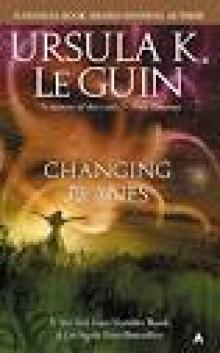 Ursula K. Le Guin
Ursula K. Le Guin Dangerous People
Dangerous People Worlds of Exile and Illusion: Rocannon's World, Planet of Exile, City of Illusions
Worlds of Exile and Illusion: Rocannon's World, Planet of Exile, City of Illusions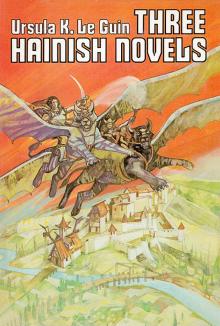 Three Hainish Novels
Three Hainish Novels The Left Hand Of Darkness (SF Masterworks)
The Left Hand Of Darkness (SF Masterworks) The Unreal and the Real - Vol 1 - Where On Earth
The Unreal and the Real - Vol 1 - Where On Earth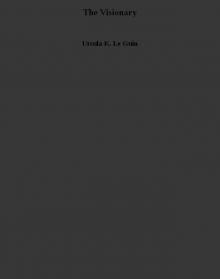 The Visionary
The Visionary The Ones Who Walk Away from Omelas
The Ones Who Walk Away from Omelas The Word for World is Forest
The Word for World is Forest Always Coming Home
Always Coming Home The Unreal and the Real - Vol 2 - Outer Space, Inner Lands
The Unreal and the Real - Vol 2 - Outer Space, Inner Lands Malafrena
Malafrena The Lathe of Heaven
The Lathe of Heaven Five Ways to Forgiveness
Five Ways to Forgiveness The Eye of the Heron
The Eye of the Heron Four Ways to Forgiveness
Four Ways to Forgiveness Powers
Powers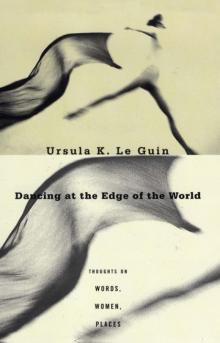 Dancing at the Edge of the World
Dancing at the Edge of the World Very Far Away from Anywhere Else
Very Far Away from Anywhere Else Voices aotws-2
Voices aotws-2 The New Atlantis
The New Atlantis The Unreal and the Real, Selected Stories of Ursula K. Le Guin Volume 1: Where on Earth
The Unreal and the Real, Selected Stories of Ursula K. Le Guin Volume 1: Where on Earth The Telling
The Telling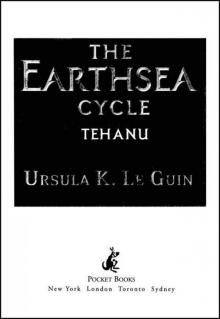 Tehanu (Earthsea Cycle)
Tehanu (Earthsea Cycle) Nine Lives twtq-9
Nine Lives twtq-9 The Birthday of the World and Other Stories
The Birthday of the World and Other Stories The Dispossessed
The Dispossessed Changing Planes
Changing Planes Words Are My Matter
Words Are My Matter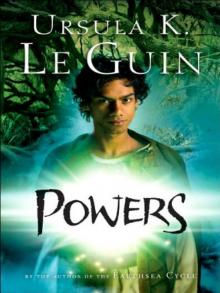 Powers aotws-3
Powers aotws-3 Lavinia
Lavinia The Wind's Twelve Quarters
The Wind's Twelve Quarters Orsinian Tales
Orsinian Tales Gifts aotws-1
Gifts aotws-1 Coming of Age in Karhide
Coming of Age in Karhide The Books of Earthsea: The Complete Illustrated Edition
The Books of Earthsea: The Complete Illustrated Edition The Found and the Lost
The Found and the Lost No Time to Spare
No Time to Spare Voices
Voices The Wild Girls
The Wild Girls Old Music and the Slave Women
Old Music and the Slave Women The Daughter of Odren
The Daughter of Odren A Fisherman of the Inland Sea: Stories
A Fisherman of the Inland Sea: Stories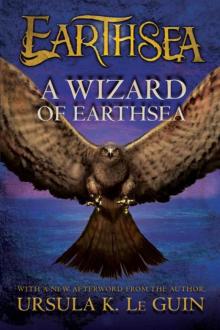 A Wizard of Earthsea (The Earthsea Cycle)
A Wizard of Earthsea (The Earthsea Cycle)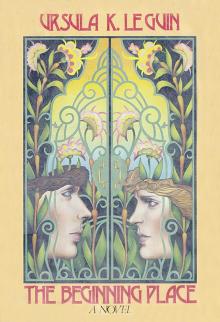 The Beginning Place
The Beginning Place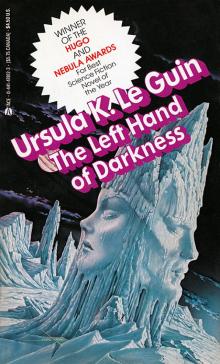 The Left Hand of Darkness
The Left Hand of Darkness The Farthest Shore (Earthsea Cycle)
The Farthest Shore (Earthsea Cycle) The Matter of Seggri botw-2
The Matter of Seggri botw-2